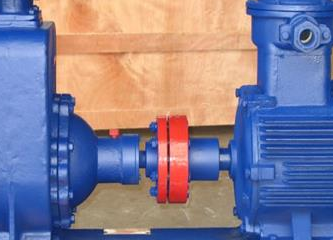Selection of self-priming pump coupling
When choosing a coupling for a self-priming pump, you need to consider multiple factors to ensure that the coupling can meet the operating requirements of the self-priming pump and ensure its long-term stable operation. The following are some key selection points:
1. Coupling type
Select according to speed and load:
For high-speed transmission shafts, balanced and high-precision couplings, such as diaphragm couplings, should be selected to ensure stable transmission and reduce vibration.
For medium and small power transmission systems, non-metallic elastic element couplings with good comprehensive capabilities can be selected, such as elastic sleeve pin couplings, elastic pin couplings, plum blossom-shaped elastic couplings, etc.
For transmission systems that need to withstand large torques and heavy loads, gear couplings or couplings with high elasticity, such as tire couplings, can be used.
Considering environmental factors:
Couplings with non-metallic components such as rubber are more sensitive to ambient temperature, corrosive media, and strong light, and are prone to aging, so they need to be selected carefully when used in harsh environments.

2. Coupling size and connection
Shaft diameter and length:
The size of the coupling must match the diameter and length of the connected shaft. Before selecting a coupling, the diameter and length of the shaft should be accurately measured, and a matching coupling should be selected.
Axis spacing:
Axis spacing refers to the horizontal distance between the shaft centers when the coupling connects two shafts. The axis spacing of the coupling must match the axis spacing required by the machine equipment to ensure accurate transmission.
Connection method:
The connection method of the coupling is usually divided into threaded connection and keyway connection. When selecting, the connection method should be determined according to the specific requirements of the machine equipment to ensure the firmness and stability of the connection.
3. Special needs
Compensation and shock absorption:
The coupling should have a certain compensation and shock absorption effect to reduce the mechanical stress caused by shaft misalignment or vibration, thereby protecting the mechanical equipment from damage.
Maintenance and overhaul:
Choosing a coupling that is easy to install and disassemble and easy to overhaul can reduce maintenance costs and improve work efficiency. For example, a rigid coupling is not only simple in structure, but also easy to install and disassemble, and is suitable for low-speed and high-rigidity transmission shafts.
4. Specific steps
Clear requirements:
First, clarify the operating parameters of the self-priming pump, including speed, load, working environment, etc., to determine the type and specifications of the coupling.
Measure shaft diameter and spacing:
Use professional tools to measure the diameter, length and shaft spacing of the shaft to provide a basis for selecting a suitable coupling.
Select coupling:
Based on the above parameters and requirements, select the appropriate coupling type and specification on the market.
Installation and commissioning:
Install strictly according to the installation instructions of the coupling, and perform necessary commissioning and inspection to ensure the stable operation of the transmission system.




